When reputable websites link to your website, Google may view your site as more authoritative. And rank it higher in search results.
Here are 10 link building strategies you can use to get quality backlinks:
1. Add Value to Other Sites’ Articles
If you convince a content creator that your link will add value, they may update their existing article with a link to your site.
So, look for articles where a reference to your brand or brand asset could add value.
For example:
- Business roundups that would be more comprehensive if they mentioned your business
- Blog posts that would be more visually appealing if they included your infographic
- How-to guides that would be more useful if they linked to your free tool
- Reports that could use your statistics to back up their arguments
- Resource pages that would be more complete if they linked to your blog post
Then, reach out to the creator with your proposal.
The writer might update their article if they’re made aware of something worth adding. And you could receive a backlink as part of their citation.
Find and pursue opportunities like these with Semrush’s Link Building Tool.
After setting it up, go to the “Prospects” report. Where you’ll find a list of link building prospects (sites that might link to you).
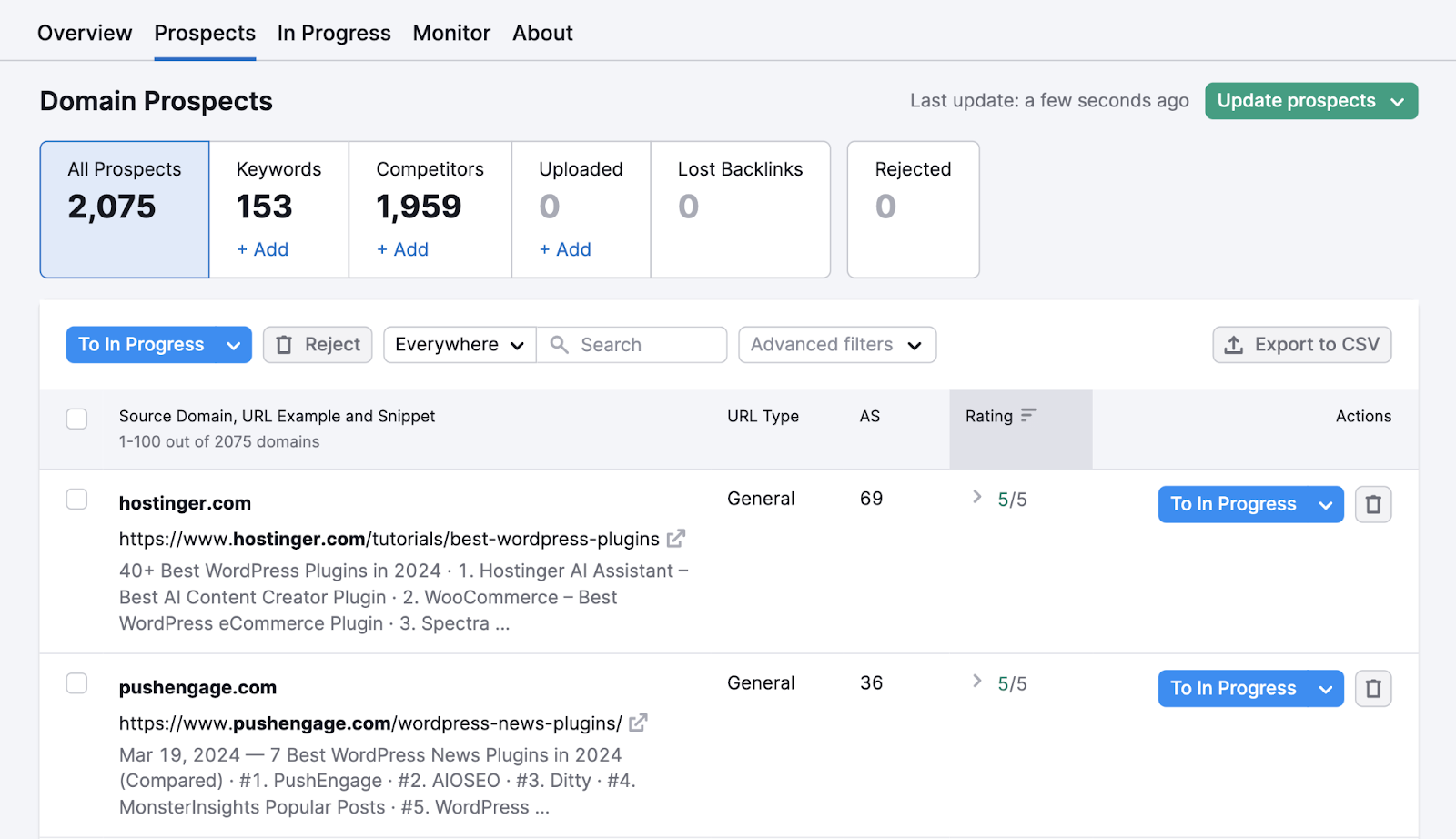
If there’s a URL for a specific page (not just the homepage), this could be a good place for your backlink.
Click the icon to visit the page. And determine whether you could add value.
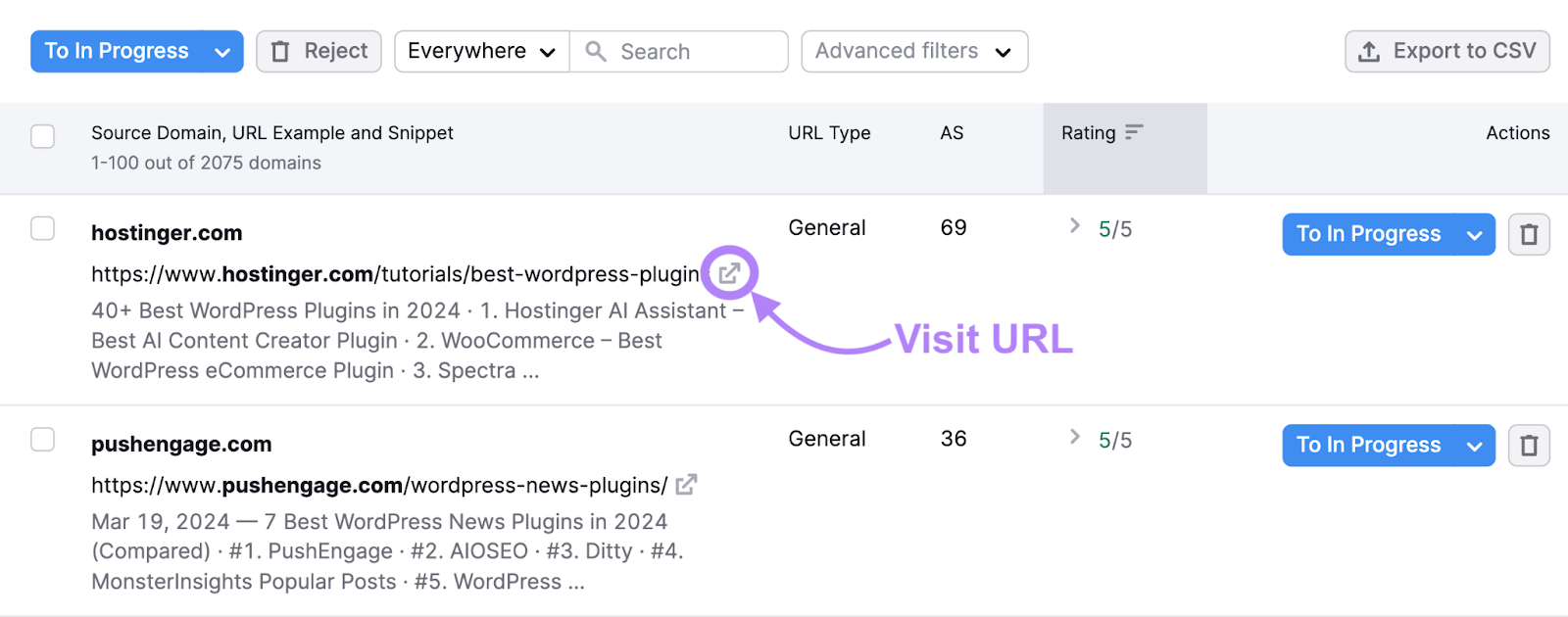
If so, return to your report.
Click the arrow alongside the corresponding “To In Progress” button and select “Add link to article.”
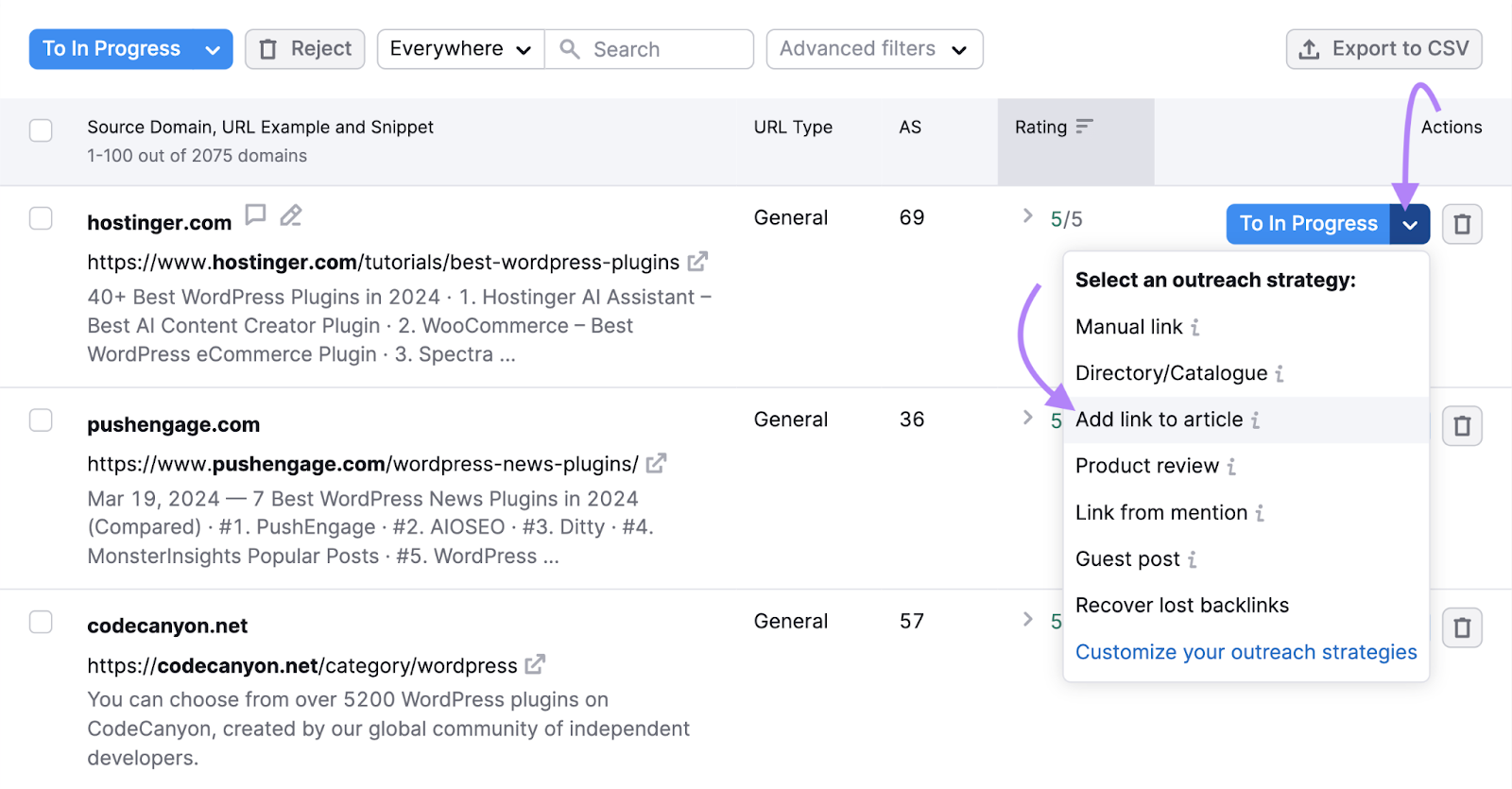
The prospect will move to the “In Progress” tab.
Make sure your email account is connected. Then, click the corresponding “Contact” button.
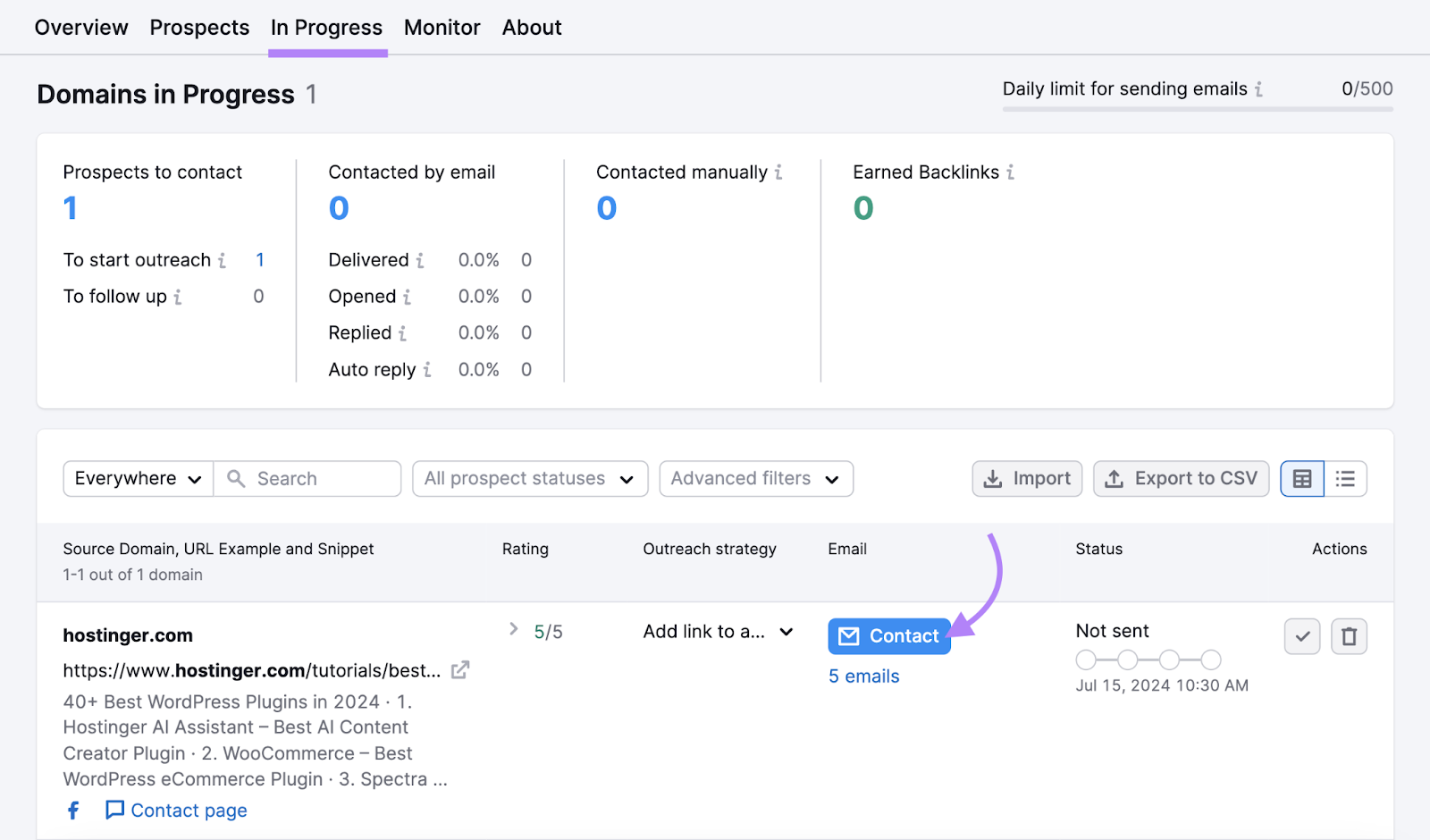
Now you’re ready to craft a friendly but persuasive outreach email:
- Select the email address for the most appropriate contact (or find the best email address yourself)
- Write a short but compelling subject line
- Address your chosen contact directly
- Explain where you’d like them to add your link and how it will add value
- Make use of the placeholders and consider saving your template for future use
For example:
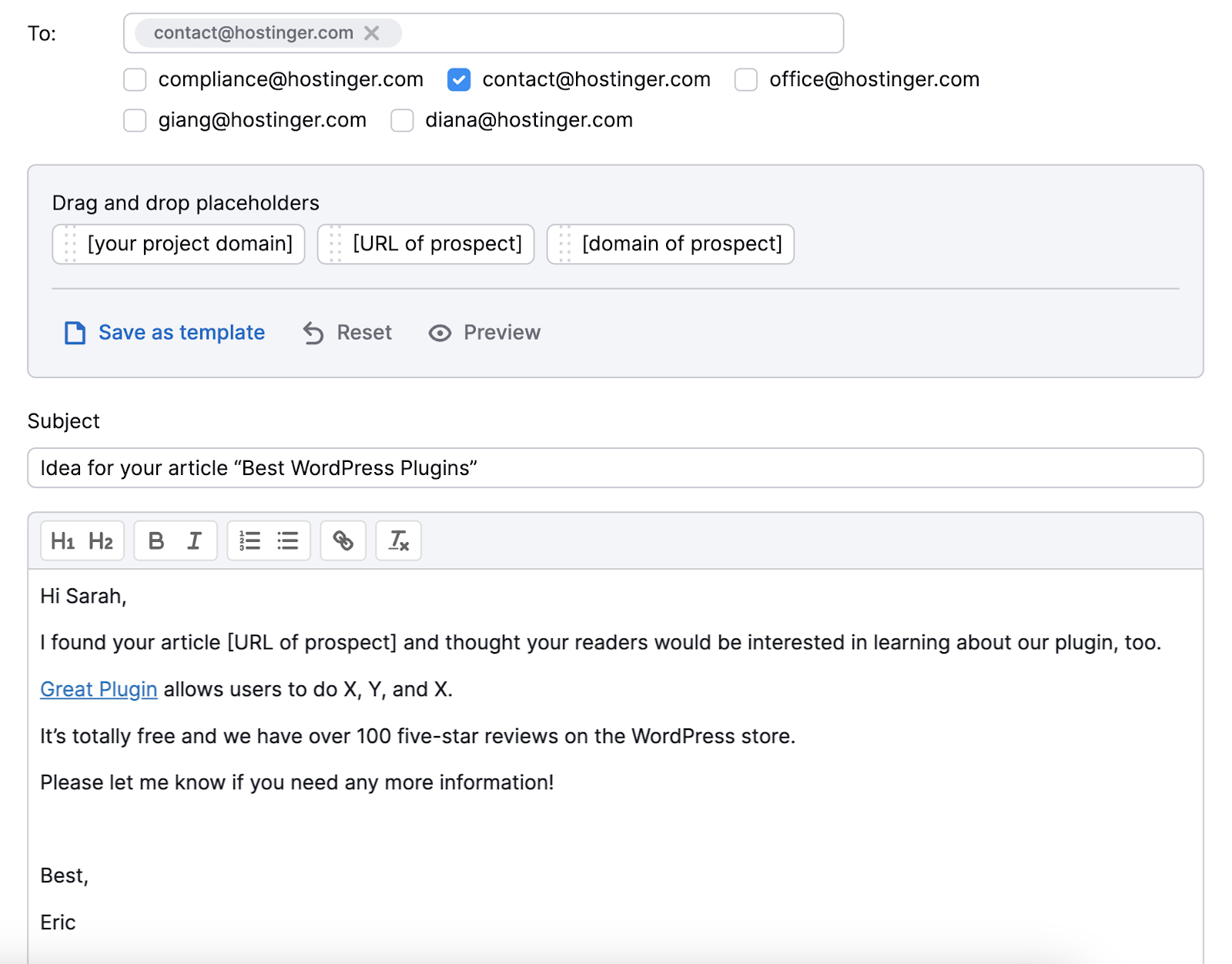
Once you’ve sent your email, you can track its status in the “In Progress” tab.
If you acquire a backlink from the domain, click the check icon to move it to the “Monitor” tab.

In the “Monitor” tab, you can track the backlinks you’ve earned.
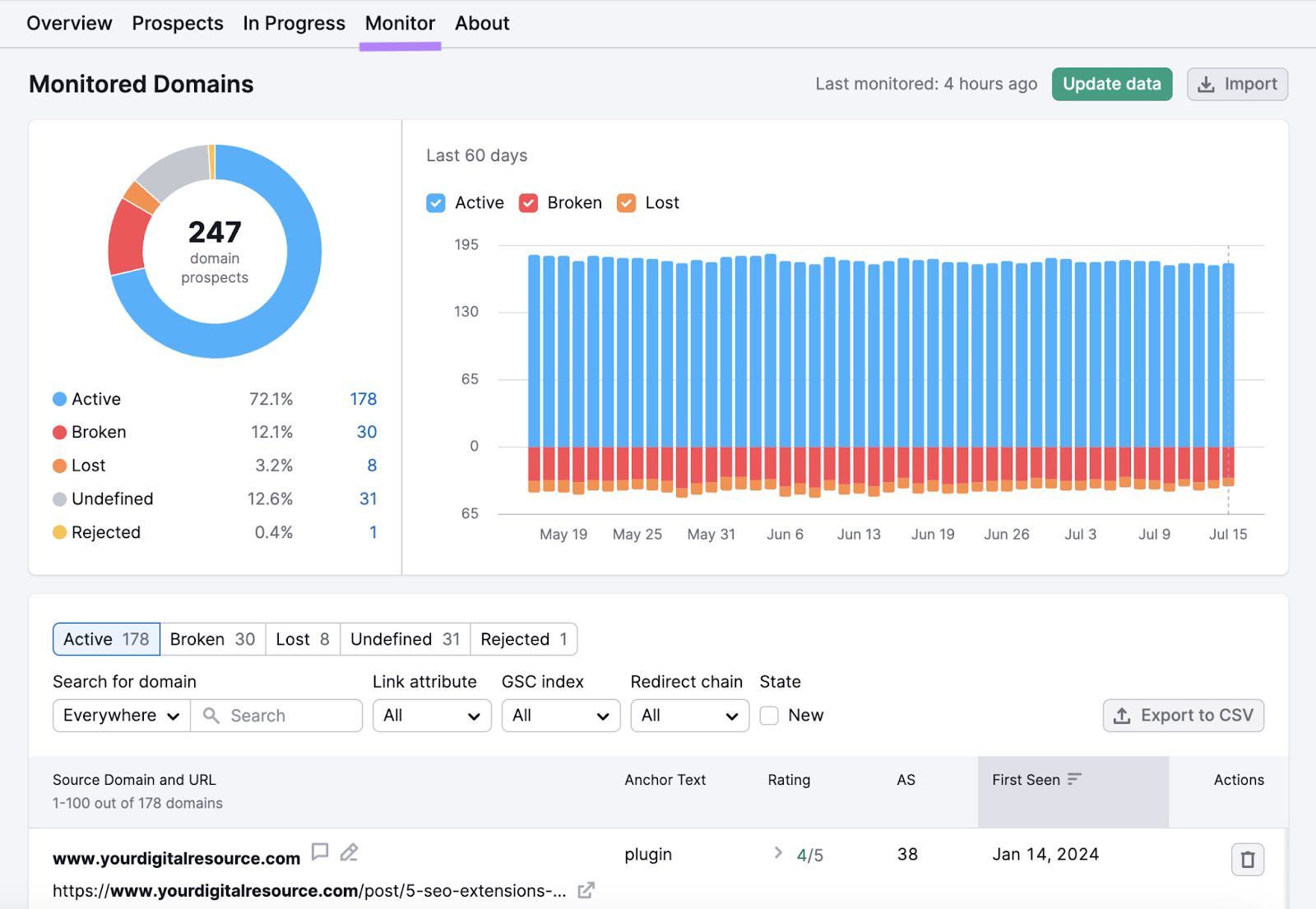
2. Find Broken Backlinks and Suggest Replacements
Broken link building is the process of finding broken links on reputable websites and convincing the creators to replace them with working links to your website.
It’s an effective link building method because no one wants broken links on their website. And you’re providing an easy solution.
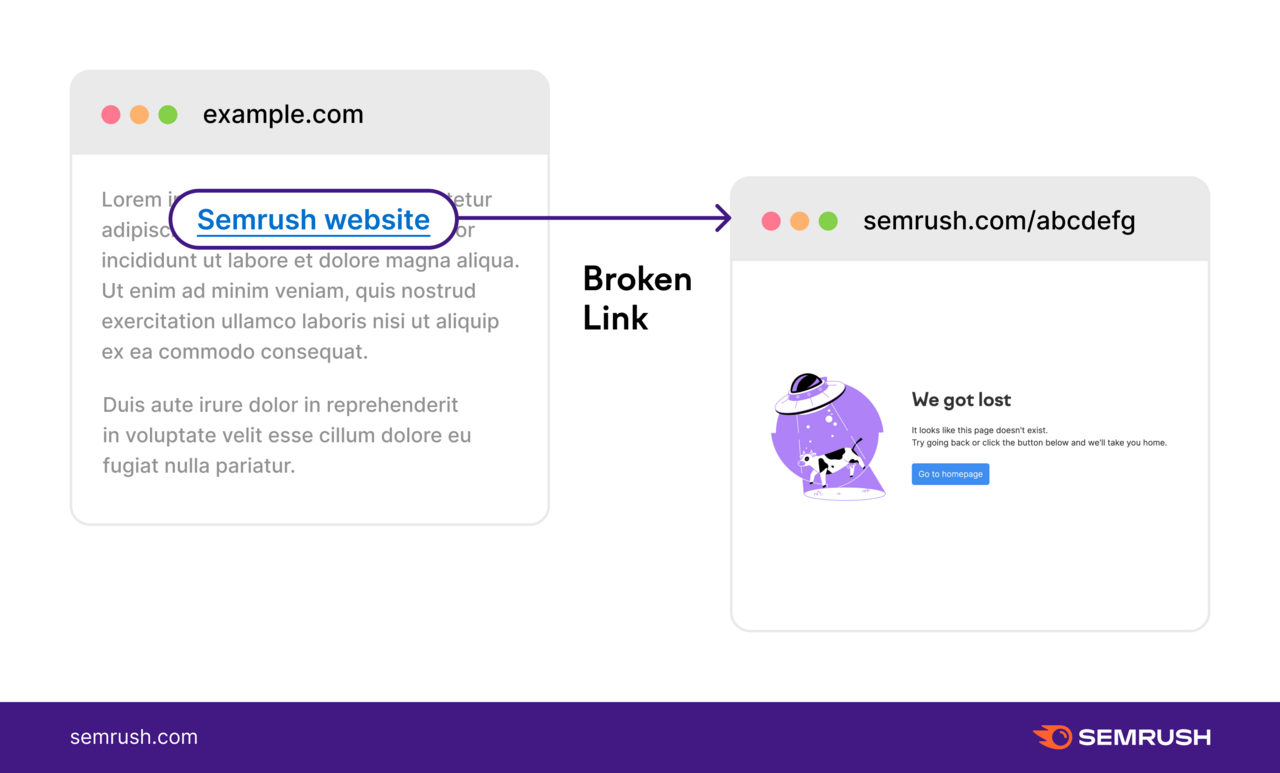
Broken link building is most likely to be successful if the link was supposed to point to your site in the first place.
You can find your broken backlinks with the Backlink Audit tool:
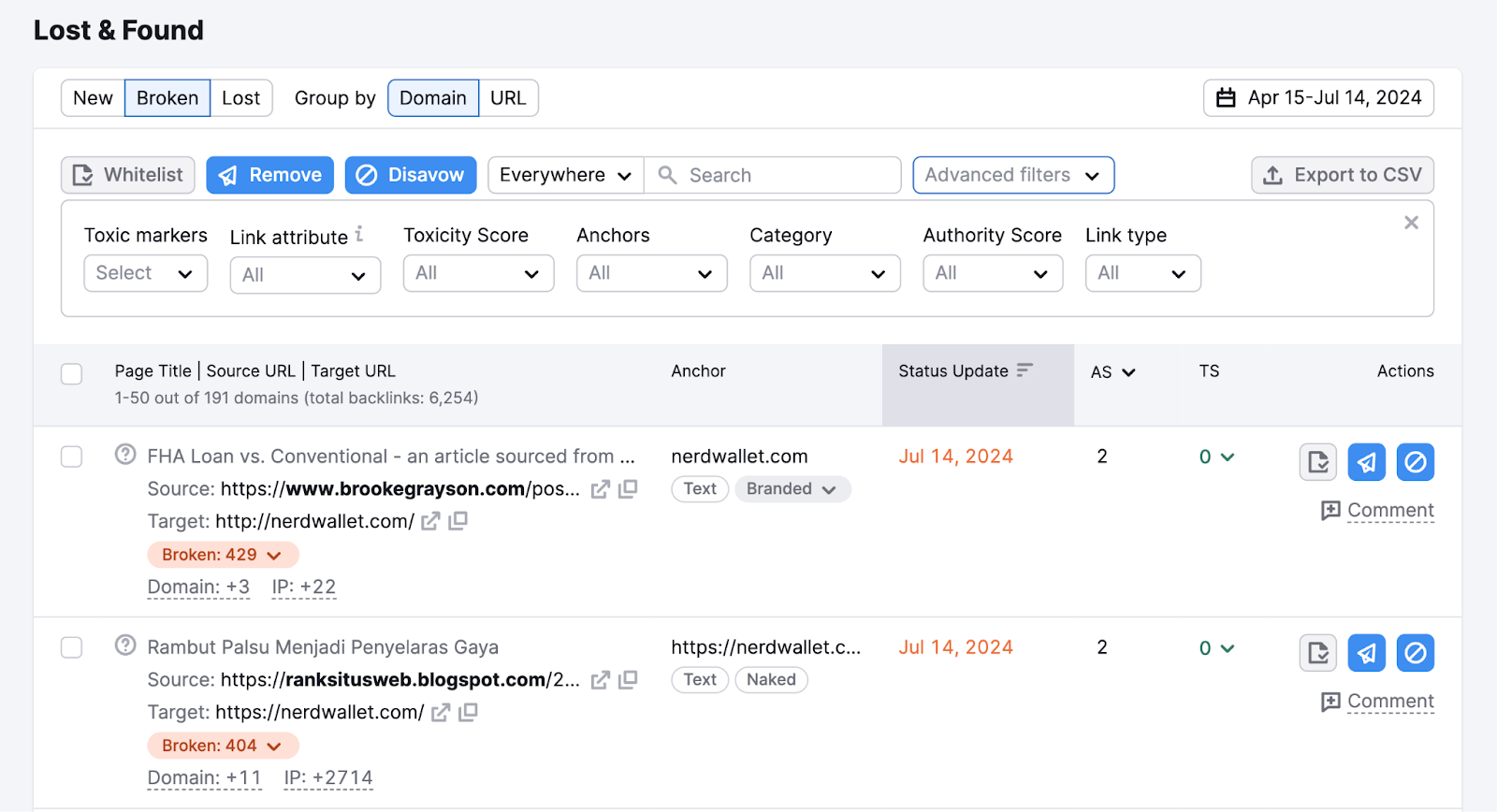
It’s also a good idea to check out competitors’ broken backlinks with Backlink Analytics. Because you may have content to act as replacements for theirs.
After searching a rival domain, go to the “Indexed Pages” tab and check the box next to “Broken Pages.”
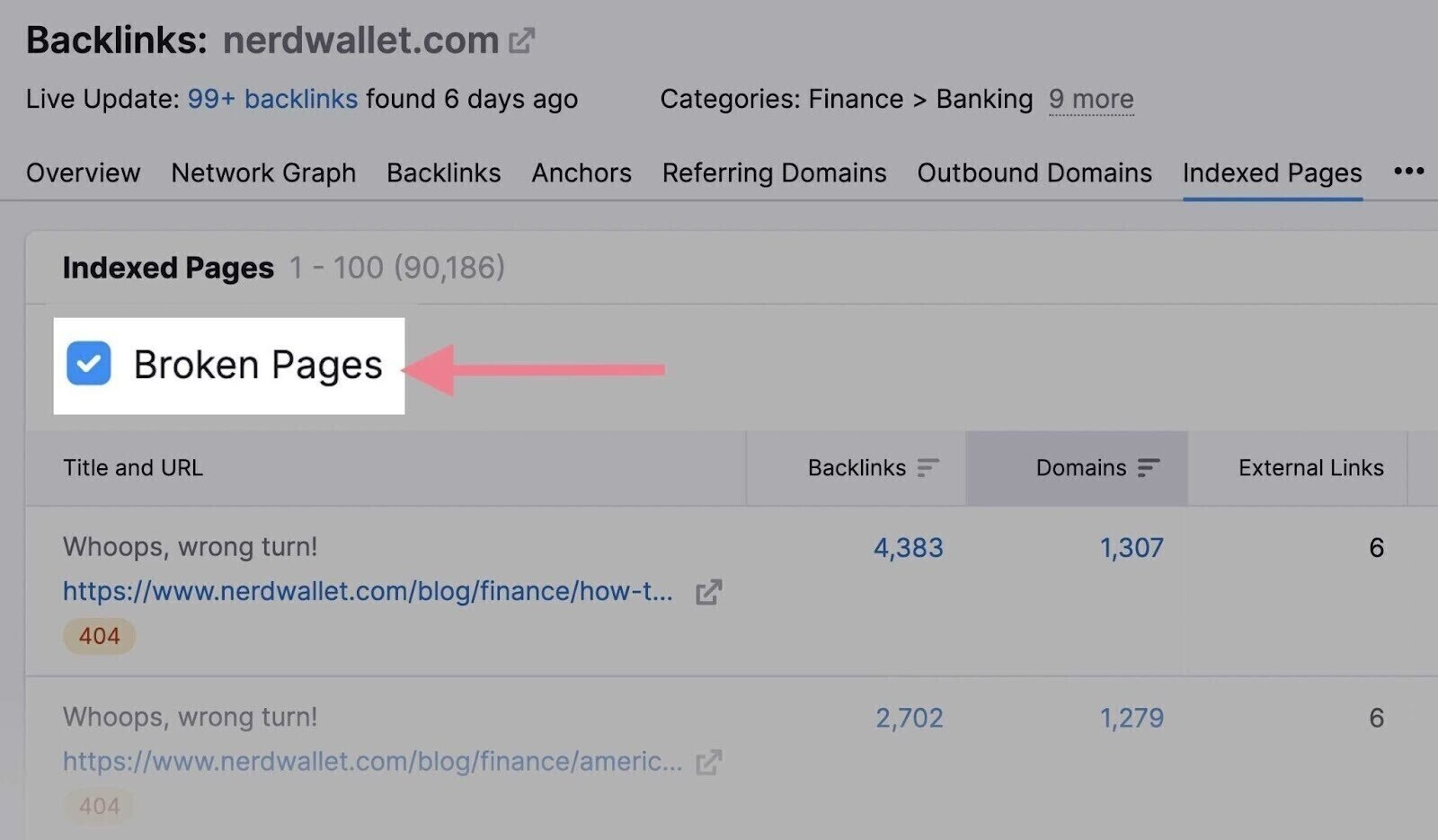
The tool will reveal your competitor’s broken pages.
Look out for those that you have a good replacement for. Then, you can try to acquire the backlinks that point to them.
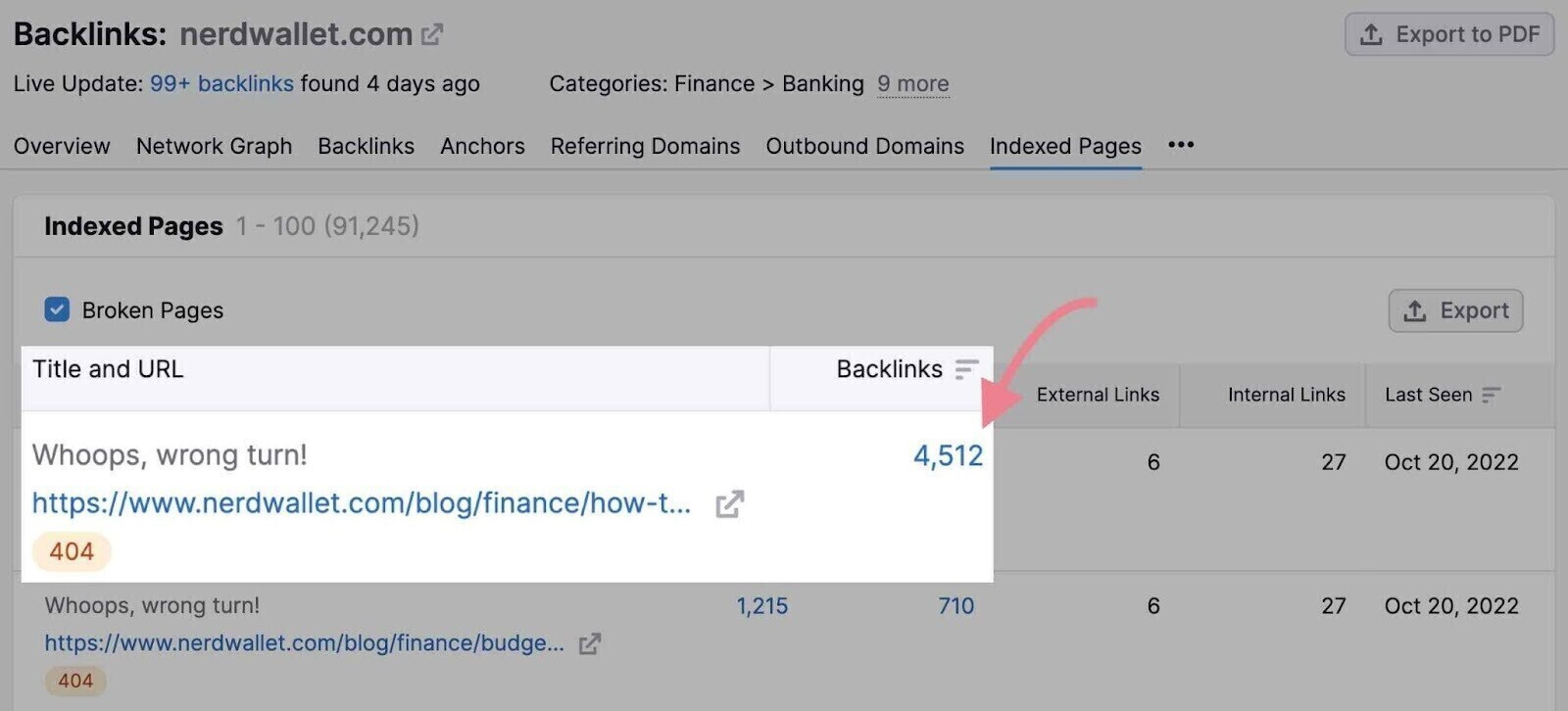
Upload your chosen prospects to the Link Building Tool. So it’s easier to manage the rest of the outreach process.
In your email, explain where the broken link is. And why your link makes a good alternative.
Like this:
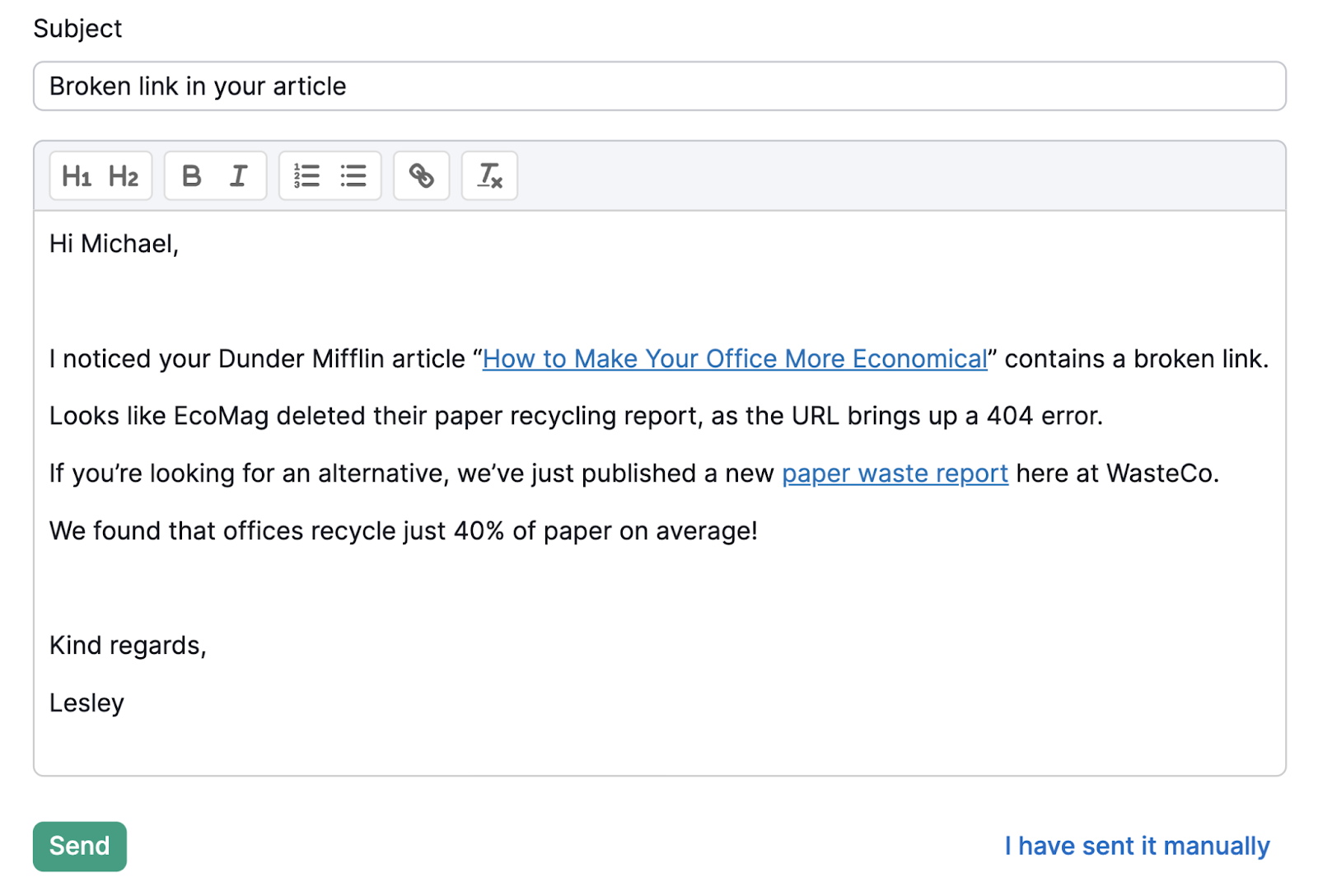
3. Ask Publishers to Link Your Unlinked Brand Mentions
Unlinked brand mentions are instances where websites refer to your brand without including a link to your site. And they might be willing to add a link if you ask.
Find unlinked brand mentions with the Brand Monitoring app.
Configure the tool to search for branded terms (and any common misspellings). And it will provide a report featuring all your mentions.
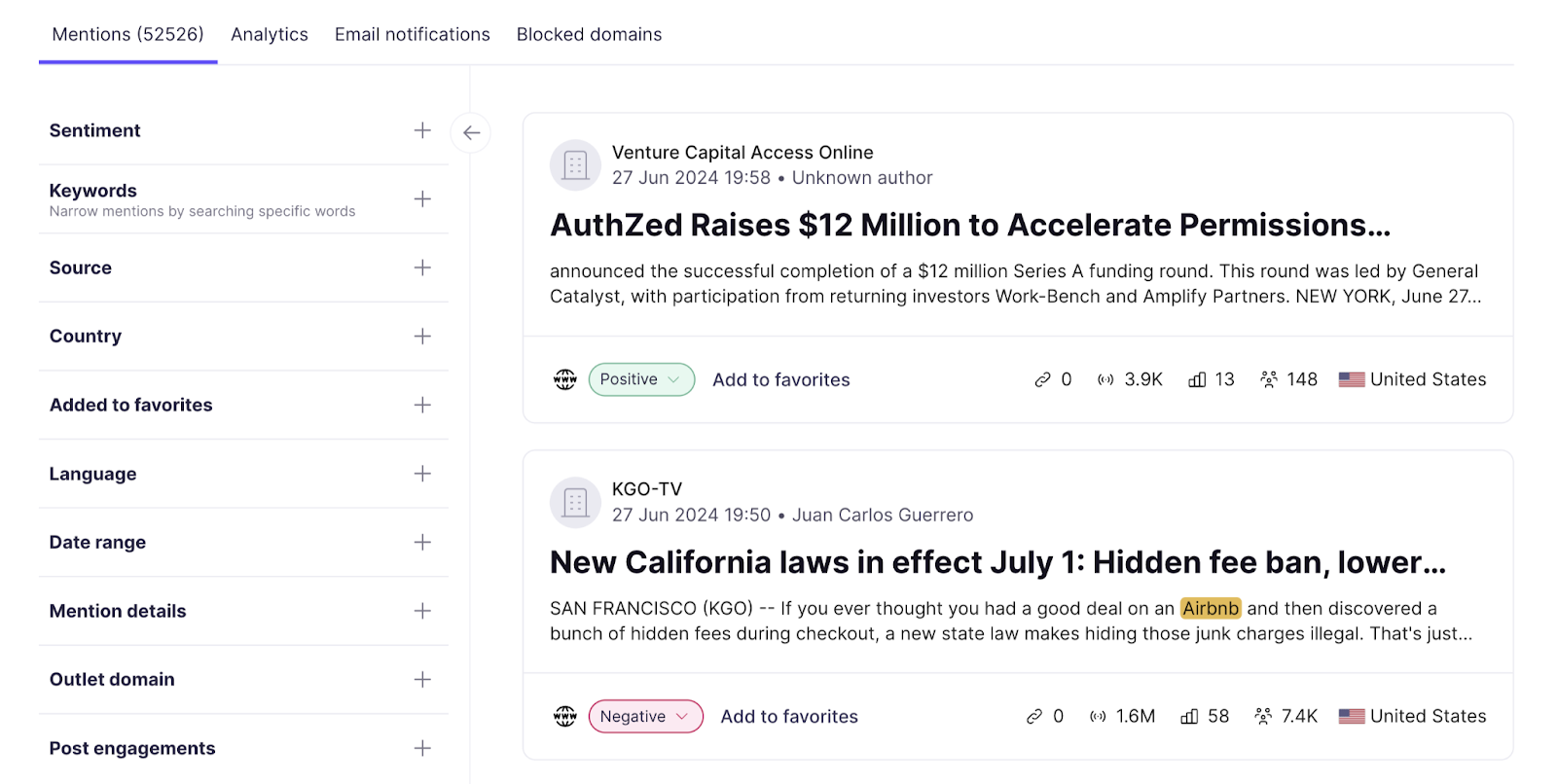
To focus on unlinked mentions, expand “Mention details” > “Backlinks” and select the circle alongside “Without backlinks.”
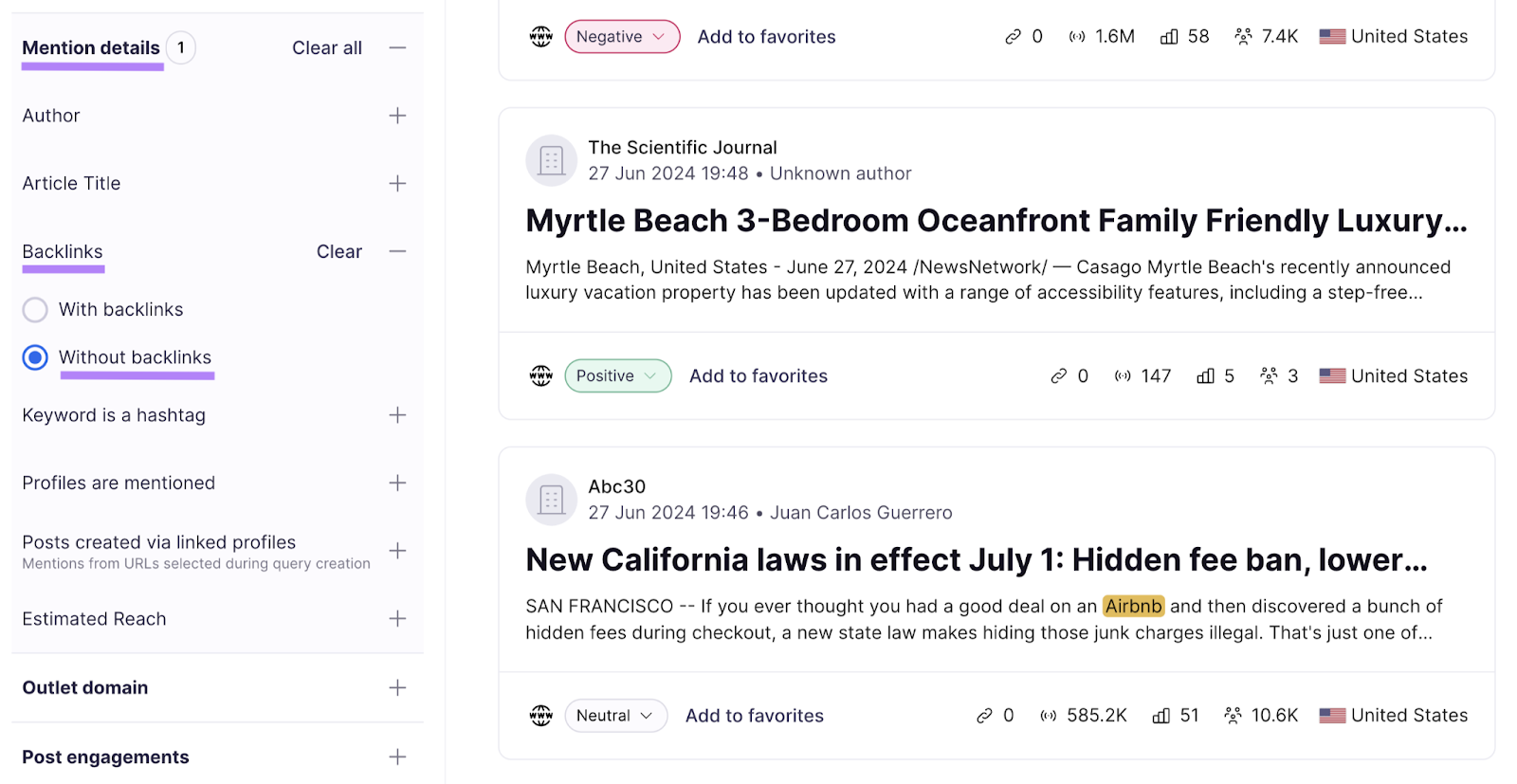
You might also want to focus on mentions with positive sentiment. Because these sites are more likely to fulfill your link request.
When you’re done, export your data as a CSV file. So it’s easier to upload your chosen prospects to the Link Building Tool.
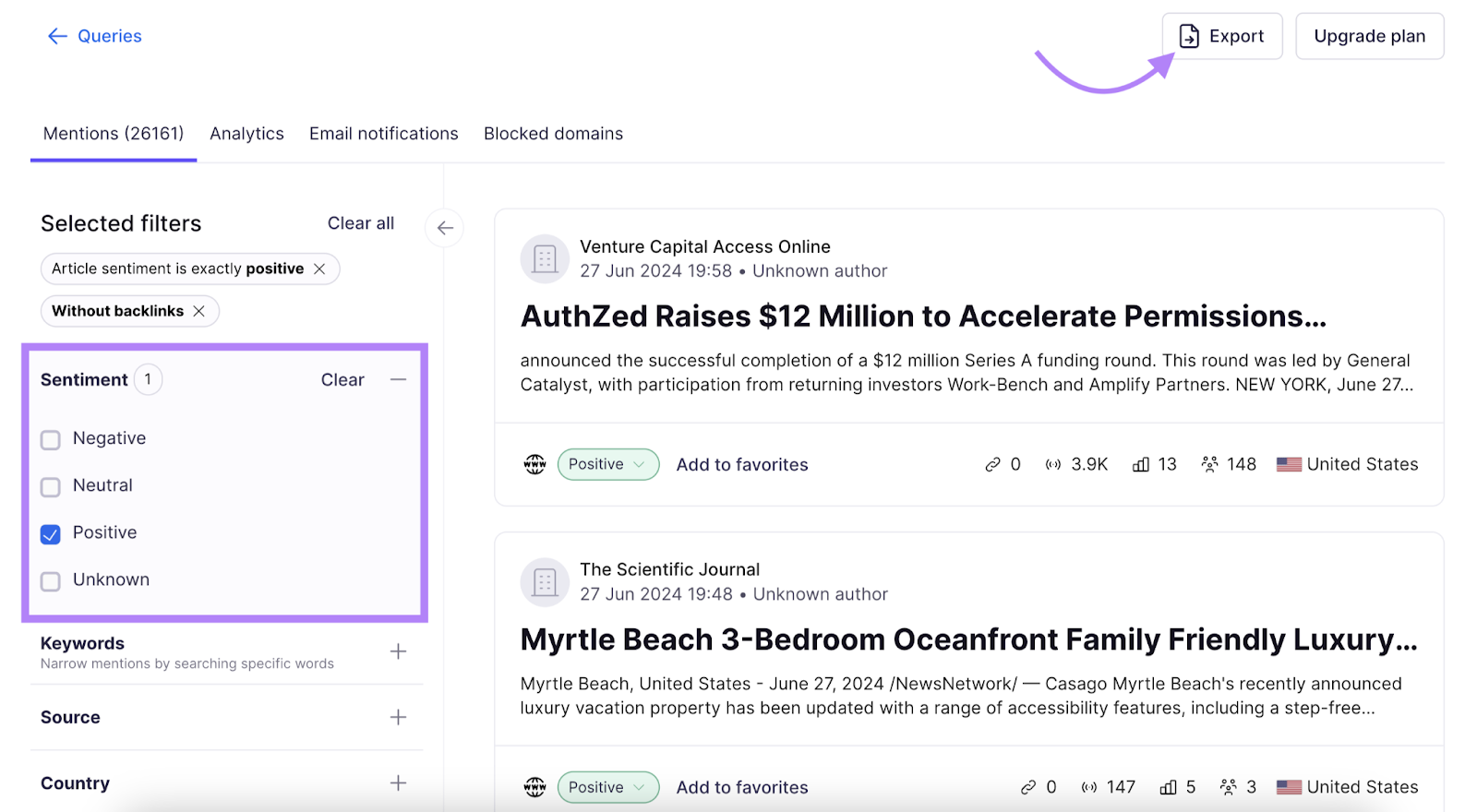
Here are some quick tips for drafting your outreach email:
- Thank the publisher for your positive mention
- Politely ask whether it’s possible for them to include a link by way of attribution
- Suggest where the link should be placed and what URL should be used
4. Acquire and Replicate Competitors’ Backlinks
When developing a link building strategy, it’s important to look at competitors’ backlinks.
First, there may be backlinks you can acquire.
In other words: If you have a better version of your rival’s page, you may be able to convince the creator to link to you instead.
This link building technique can give you a competitive edge.
Second, there may be backlinks you can replicate.
For example, a publication that interviewed your rival’s CEO might be interested in interviewing your CEO, too.
This technique helps you to close any backlink gaps.
So, compare your backlinks against competitors’ with the Backlink Gap tool.
Enter your domain and up to four rival domains. Then, click “Find prospects.”
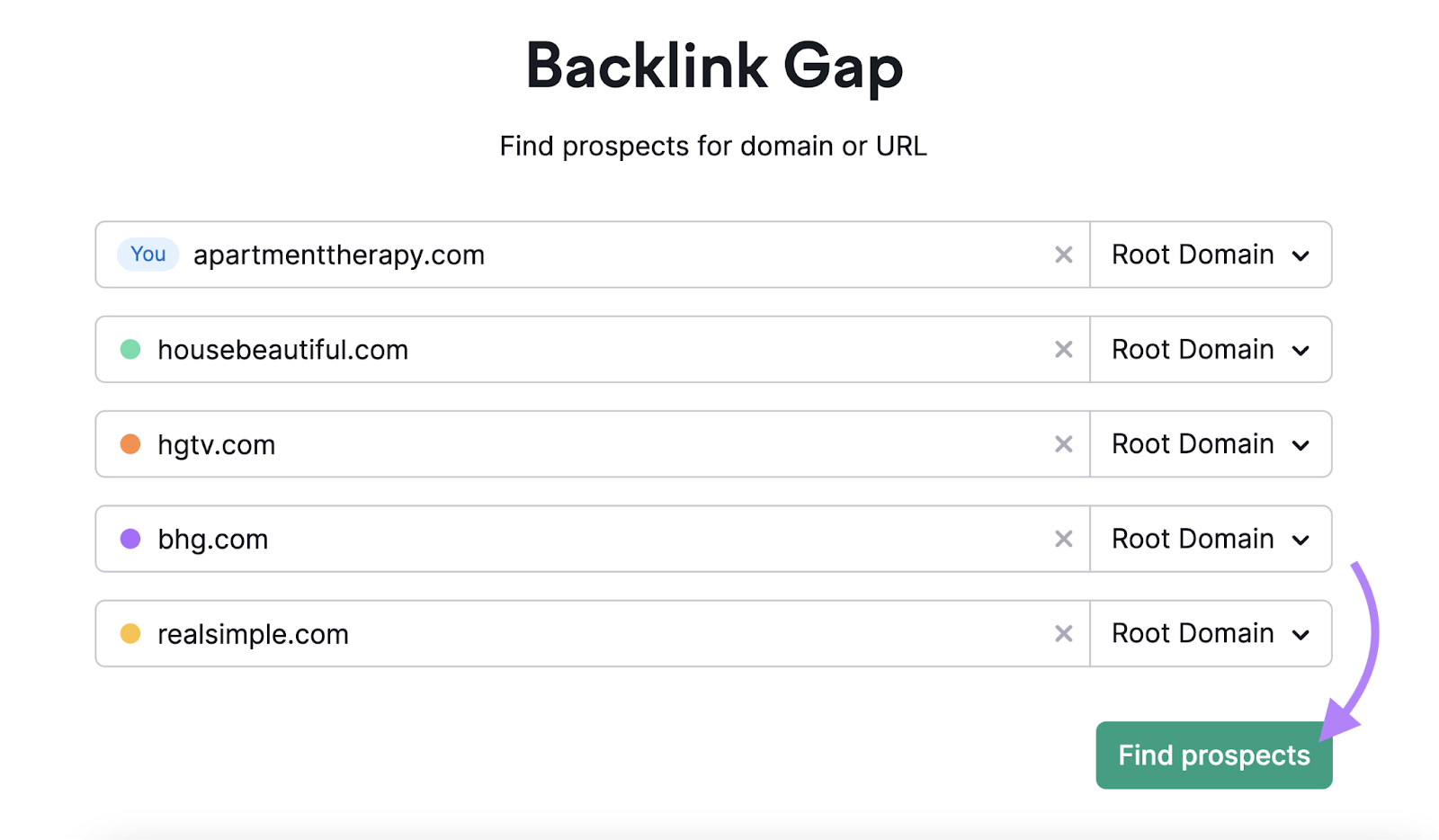
The “Best” tab is displayed by default and shows domains that link to all your competitors but not to you.
Click the arrow in the corresponding column to learn more about each competitor’s backlink(s). And develop a plan for acquiring or replicating them.

Then, use the checkboxes and “+ Start outreach” button to send your prospects to the Link Building Tool.
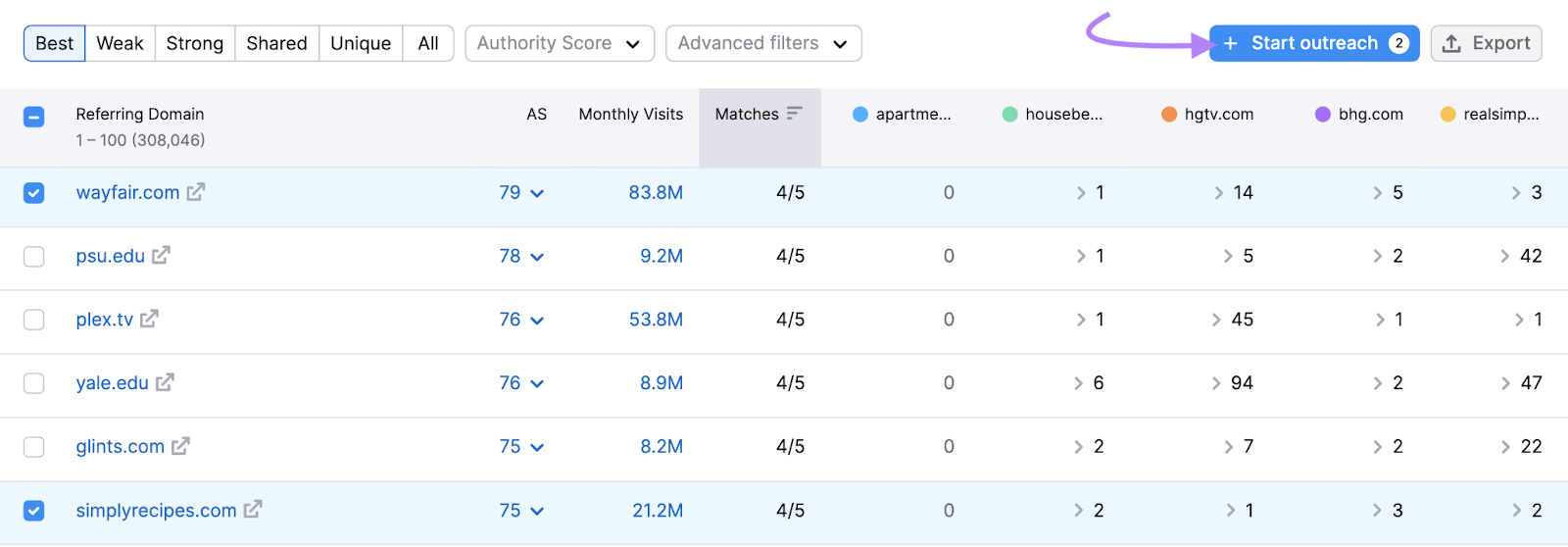
When content creators need expert input or a specific asset (e.g., a product image) for their article, they may issue a media request.
Responding to these requests can be an effective link building tactic because:
- It can help you get featured in high-quality publications
- Responses are often quick and easy to provide
- Creators often credit their chosen contributors with a link
This technique used to be called HARO link building, because people primarily used the HARO (Help a Reporter Out) platform to find requests. That platform is now called Connectively.
If you join Connectively as a subject matter expert, you can search for relevant requests. And sign up for email alerts.
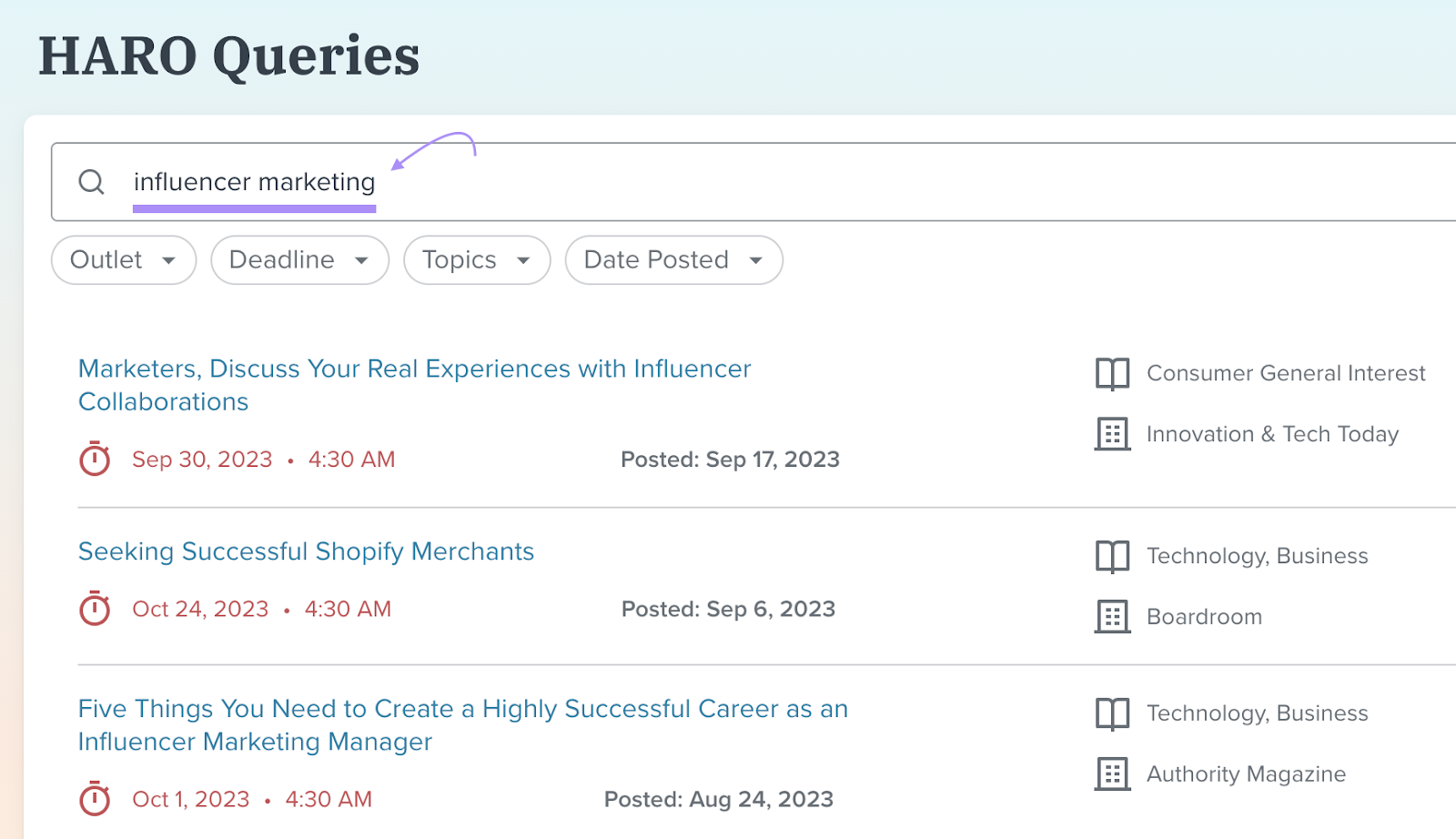
When you find a relevant request, try to give the creator exactly what they need. And respond as quickly as possible.
This will maximize the chance of your submission being used.
6. Use Digital PR to Grab Journalists’ Attention
Digital PR is the process of generating online media coverage for your brand. And it can be an effective backlink building technique.
Generally, it works like this:
- You develop a story related to your brand and a current trend/news story
- You distribute this story to relevant writers via a press release
- Writers cover your story and may credit you with a link
It’s possible to get coverage of company news—e.g., mergers and acquisitions, new hires, and product launches. But you may have more success with creative campaigns.
For example, CV Villas researched the bluest waters in the world. And the story got picked up in large publications like USA Today.
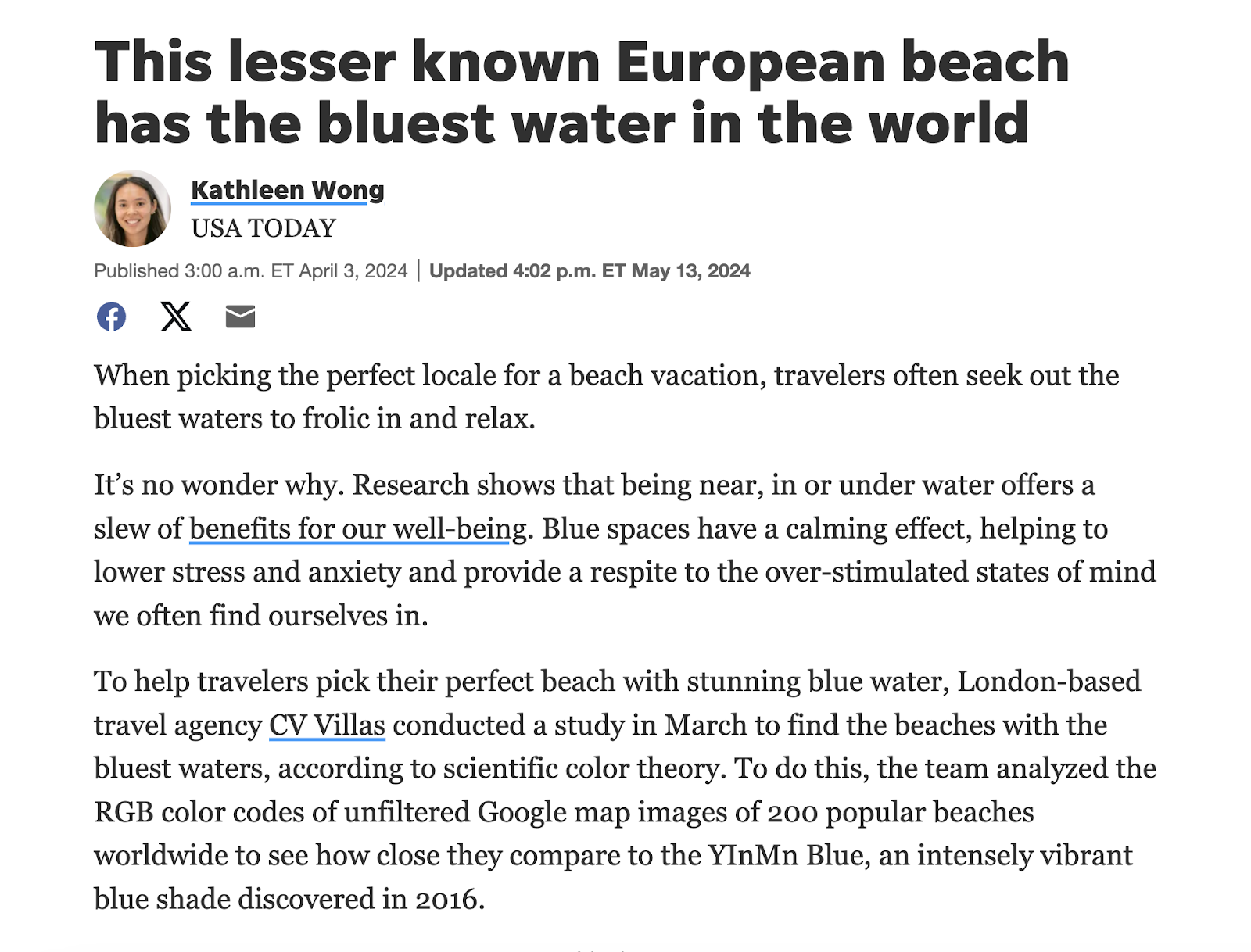
Digital PR campaigns like this can generate high volumes of mentions and backlinks.
For the best chance of success, build your prospect list with a tool like Prowly.
You can find media contacts based on topics, locations, and more:
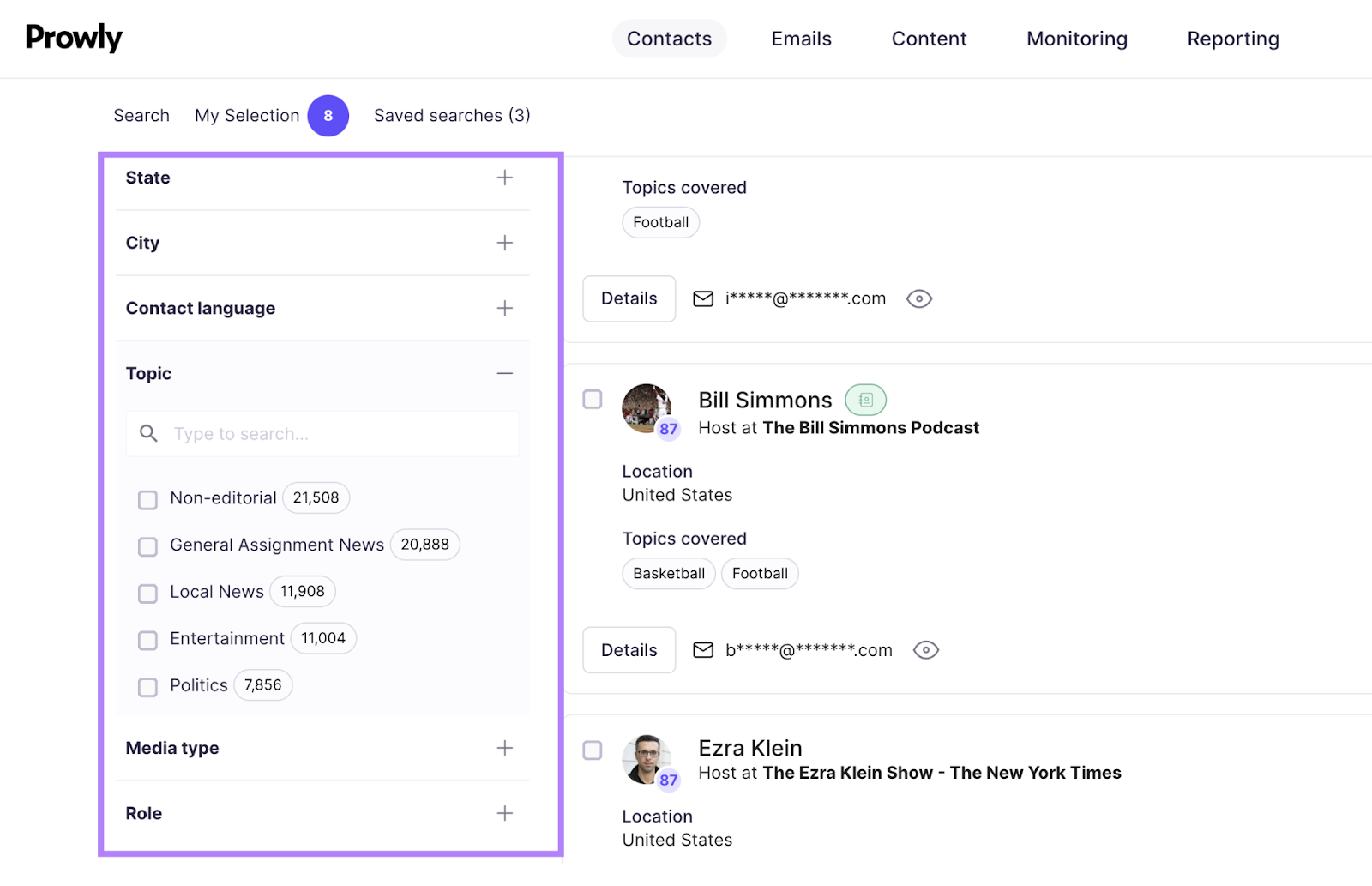
Save your chosen contacts to a list.
Then, you can draft and send your pitch within the tool.
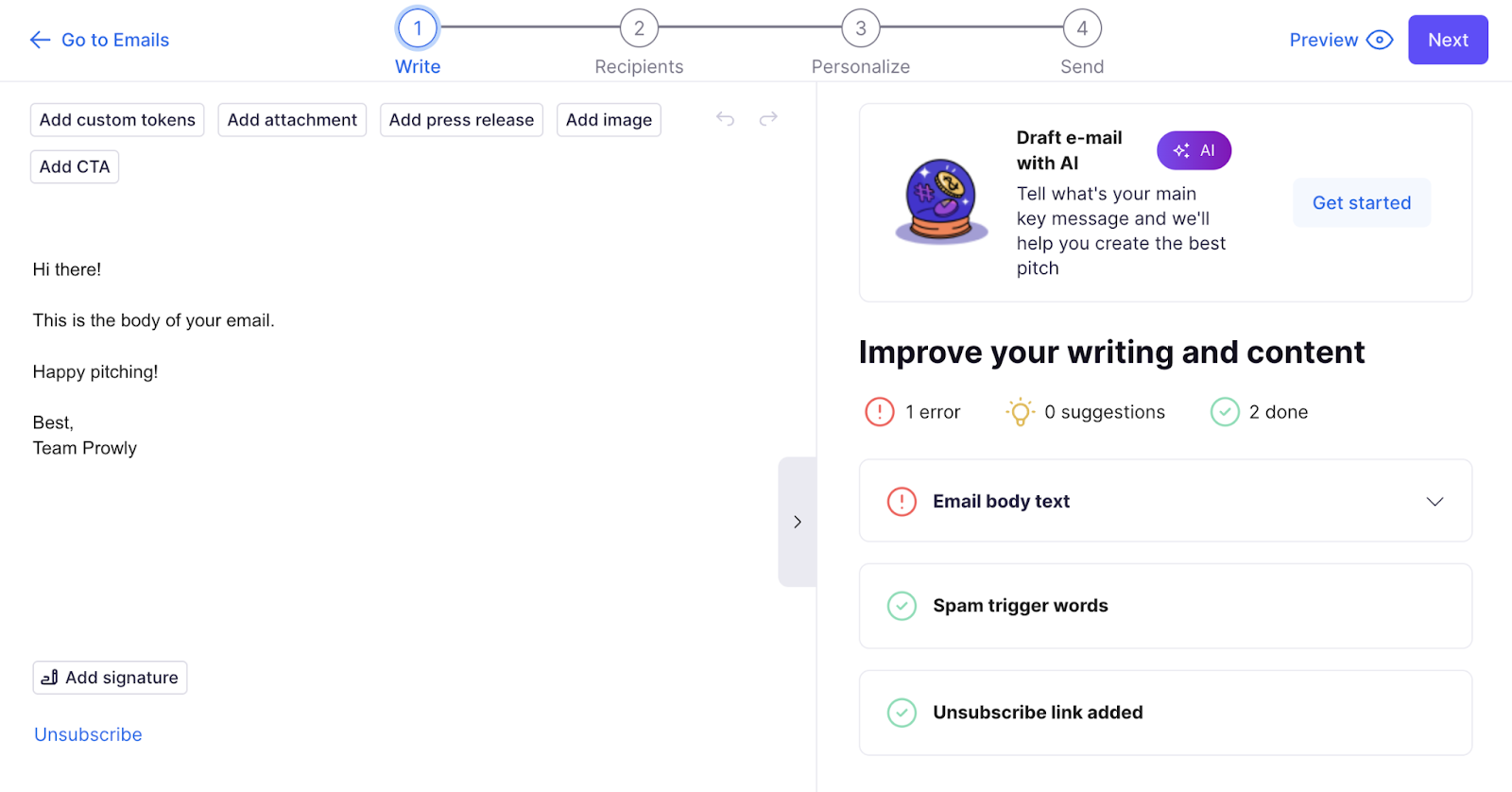
7. Create Link Bait
Link bait is content that naturally accrues backlinks. Usually because it:
- Acts as a useful source for writers—or a useful resource for their readers
- Ranks prominently in search engines (i.e., is easily discoverable)
- Delivers value that’s hard for others to replicate
Imagine you’re writing about mortgages.
You might not have the resources required to create a mortgage calculator. So, you look for one you can recommend to your readers. And link to it from your page.
Like this:

You might also want to include some statistics about historical mortgage rates. So, you search for relevant data. And cite the source in your article.
Like this:

Think about the types of content in your niche that people might want to link to.
Then, try to create the very best version of it. And optimize it for search.
You can also improve your content’s discoverability by:
- Posting it on social media
- Sharing it in relevant communities (as long as it’s genuinely helpful)
- Linking to it from your email newsletter
8. Collaborate with Your Partners
If you have any partnerships with businesses, organizations, or influencers, see if you can get backlinks out of them.
For example, vendors/suppliers might want to:
- Announce your partnership on their blog
- List you on their “clients” page
- Publish a testimonial you’ve provided
- Create a case study about your business
And this gives you the opportunity to get backlinks like the one below:
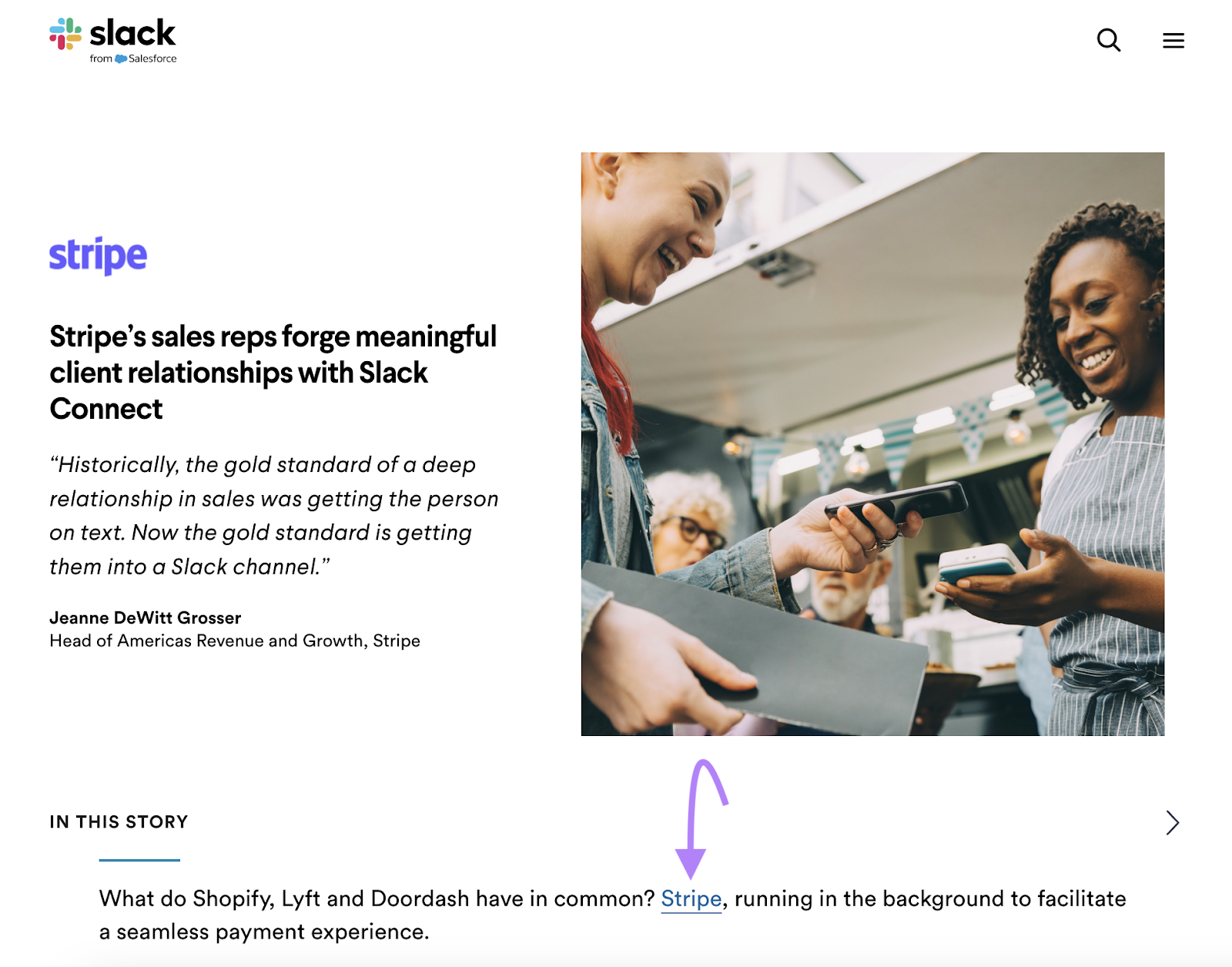
You can also run collaborative marketing campaigns to multiply your link building efforts.
For example, Levi’s collaborated with McLaren to create a clothing range. Both brands have promoted the partnership and likely earned each other links in the process.
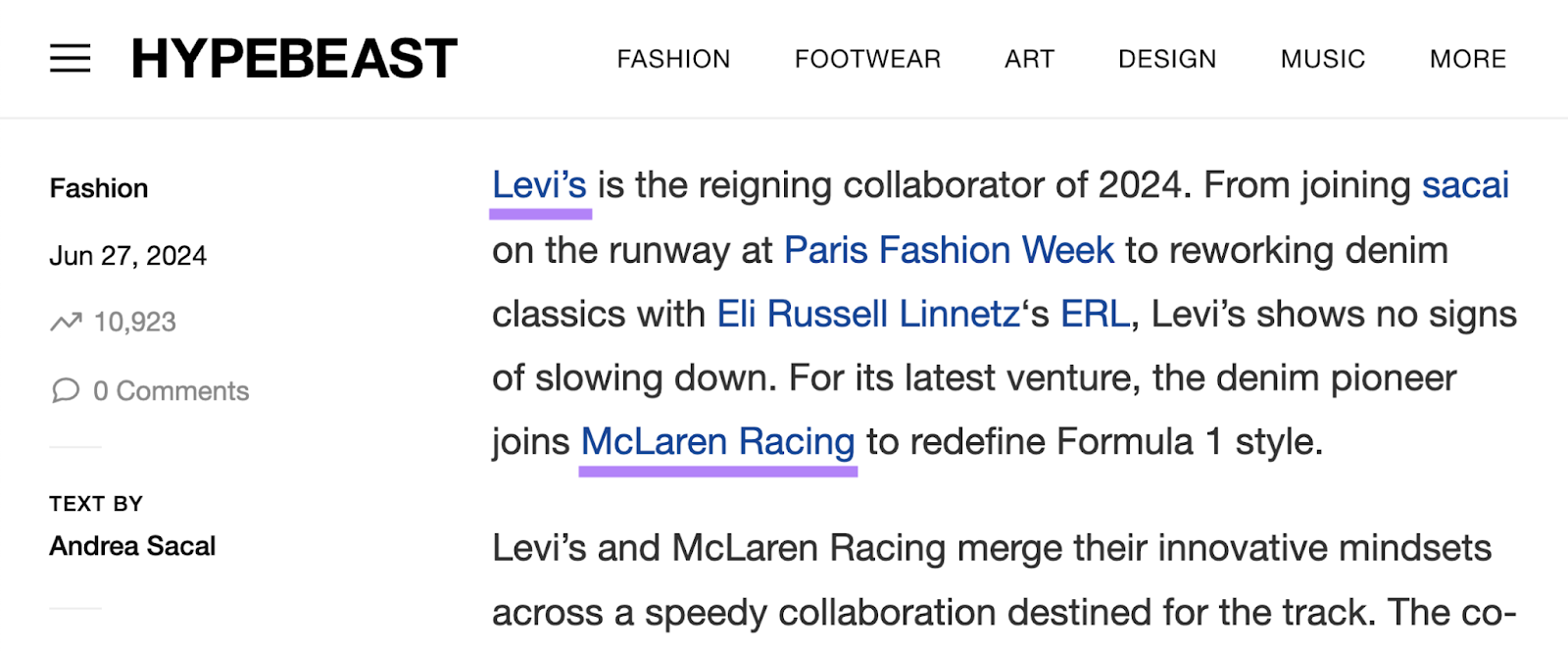
9. Recover Lost Backlinks
If one of your backlinks is removed, consider trying to get it back. Because if a domain linked to you in the first place, they’re probably willing to do it again.
After all, the creator might have deleted your link accidentally. Or maybe their content needs have changed, but they’d be willing to include a link to something else on your website.
Find and monitor your lost backlinks with the Backlink Audit tool.
After setting up your project, go to the “Lost & Found” report.
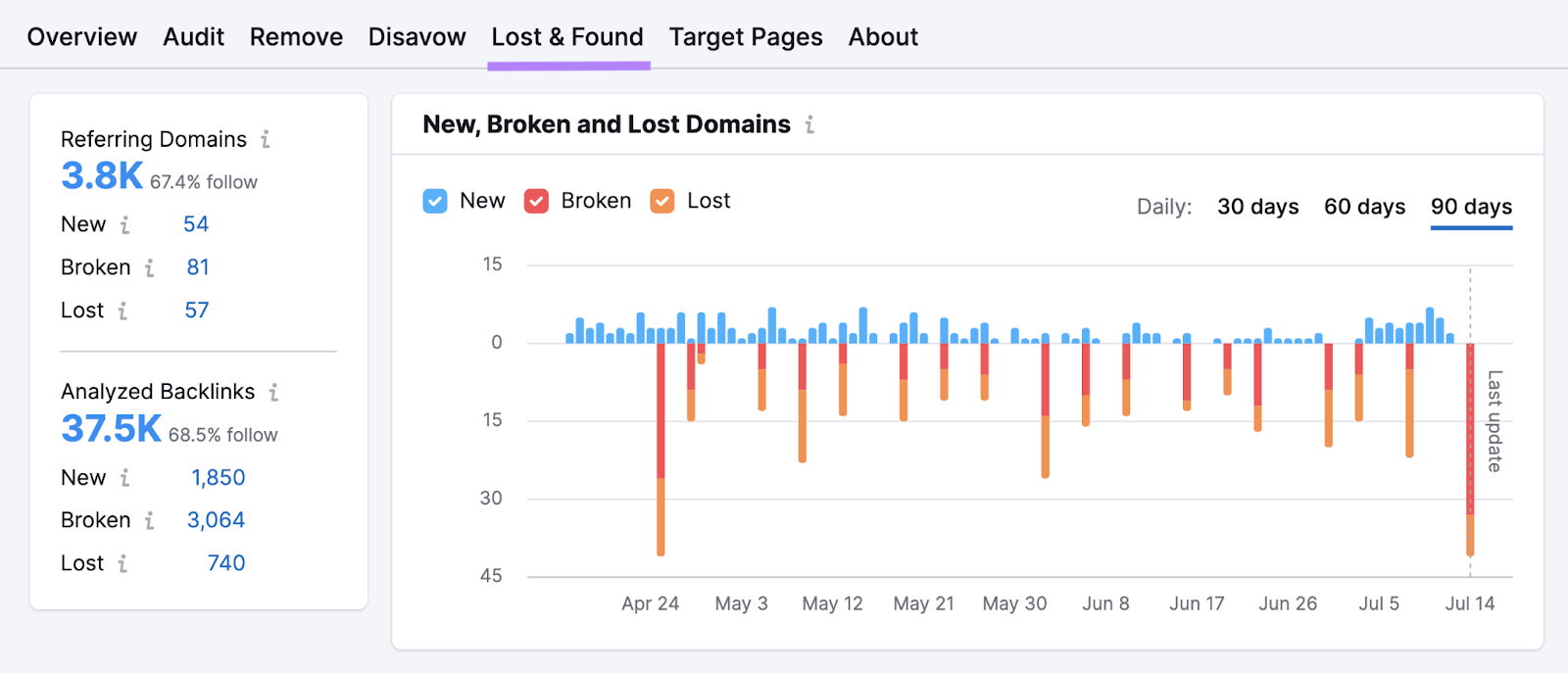
Click the blue number next to “Referring Domains” > “Lost.”
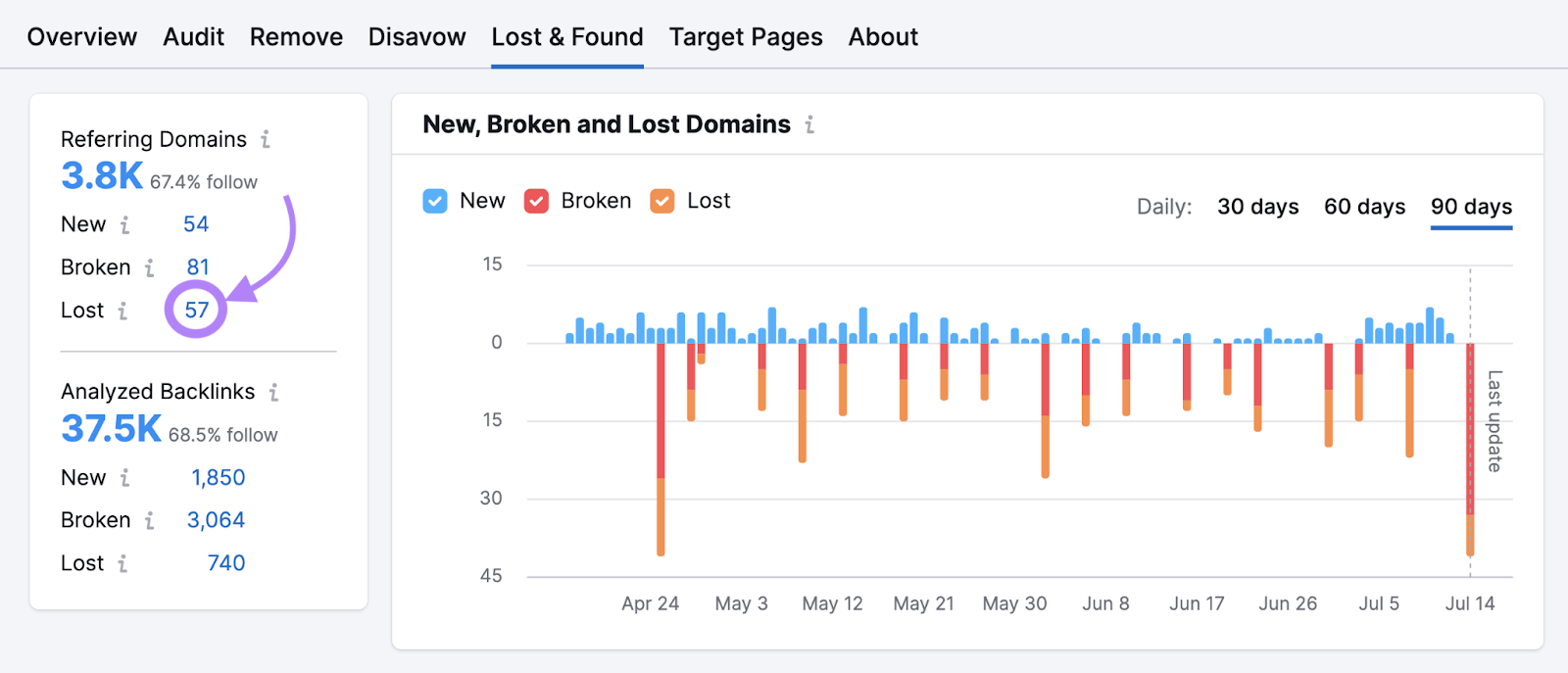
Then, click “Advanced filters,” select the “Authority Score” drop-down and set a custom range from 50 to 100. (This means links from those domains are likely to be the most beneficial.)
Like this:
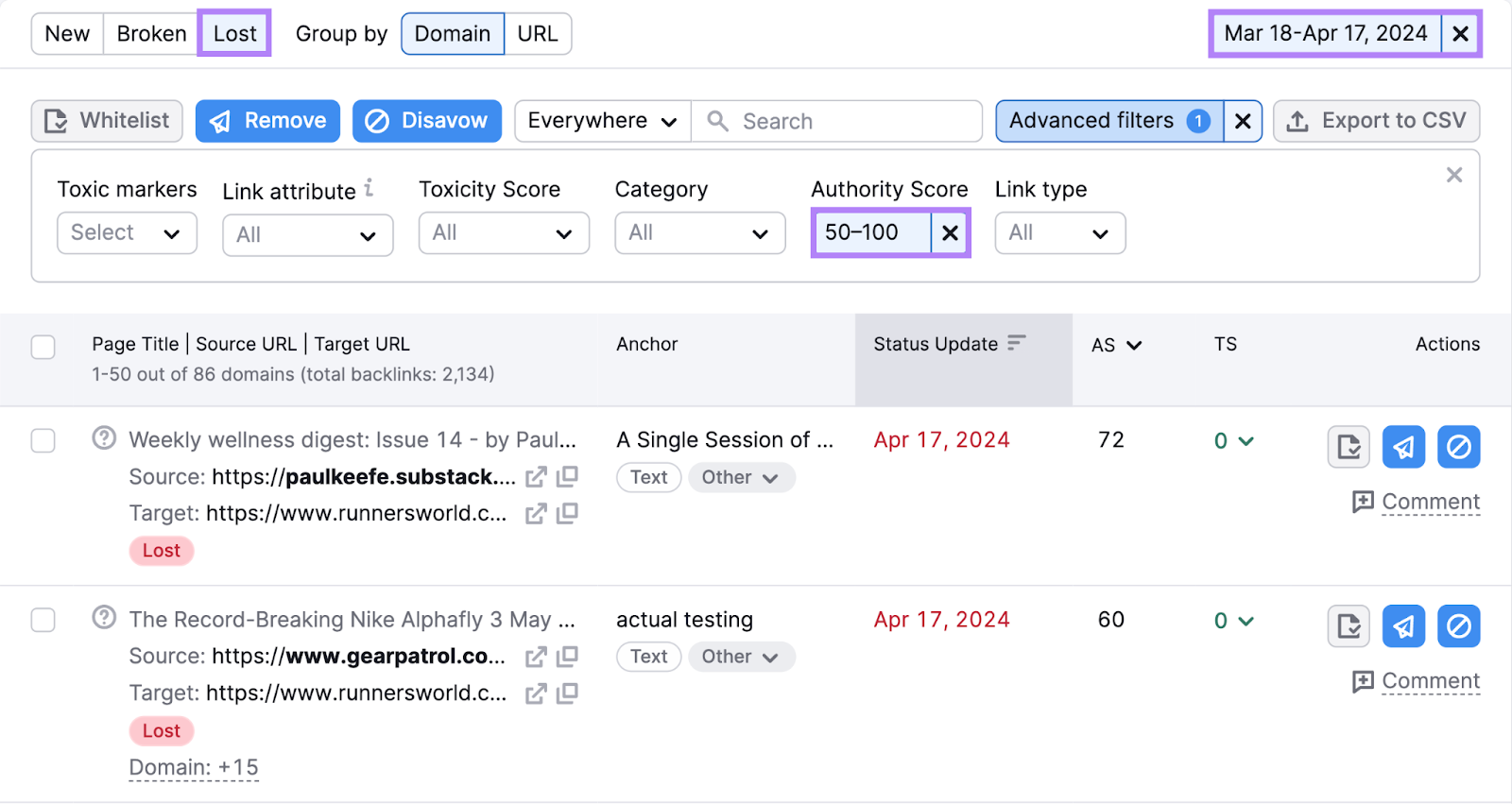
You’ll see authoritative domains that you’ve lost all backlinks from in the specified time range—i.e., domains you no longer have any active backlinks on.
Visit any source URL to try to work out what happened to your backlink.
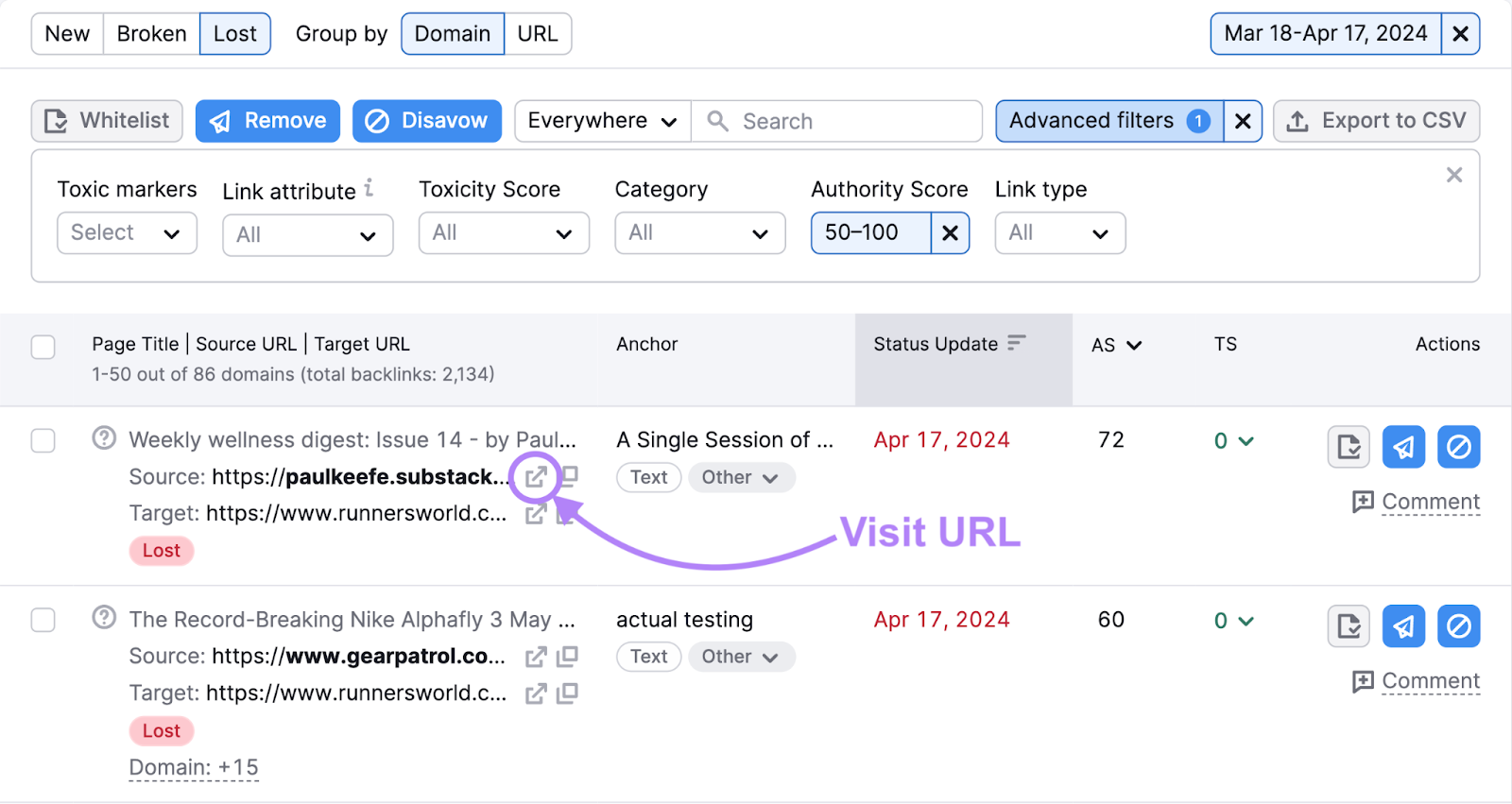
If you want to compare against the old version of the page, you might be able to find it on the Wayback Machine.
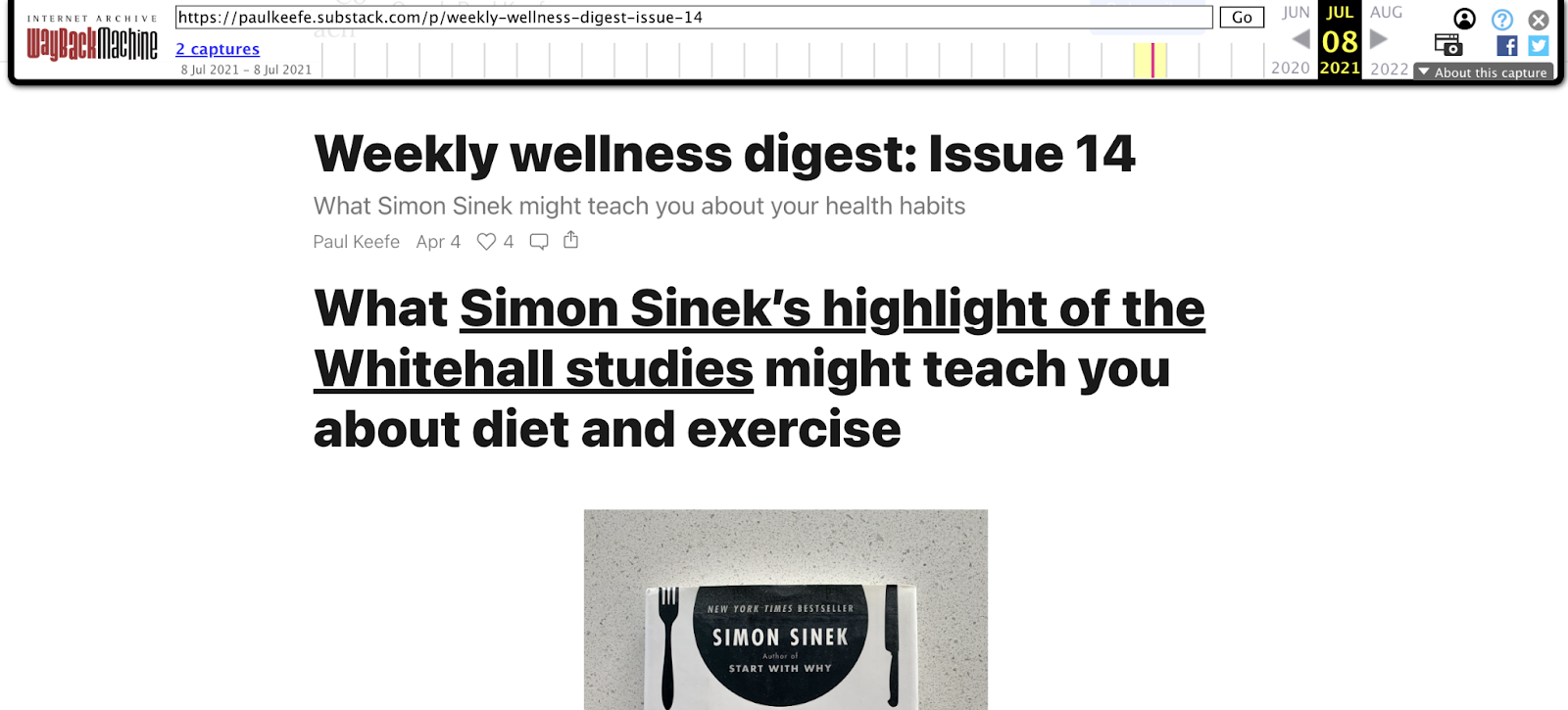
Think there’s a chance of getting your backlink back (on the original page or elsewhere on the site)?
Send a friendly email to the page or website owner.
10. Build Your Brand
One of the best ways to acquire links is to build brand awareness. And a strong brand identity.
Because it increases the chance that content creators think of and choose your brand when adding links.
For example, WebMD is a well-known and well-regarded health site. So, when creators need to source health information, they’re likely to link to WebMD.
Here are some ways to build a brand that people link to:
- SEO: Get unpaid exposure in search engine results pages
- Social media management: Expand your reach and build connections through social platforms
- Digital advertising: Pay to promote your brand in relevant locations
- Influencer marketing: Incentivize influencers to promote your brand to their audiences
- Guest blogging: Write authoritative blog posts for relevant sites in your niche
- Content marketing: Create and distribute content that boosts your visibility and topical authority
There’s also a flywheel effect in link building:
The more links you acquire, the more your authority and visibility increase. Making it easier to build links in the future.
Set the flywheel in motion with Semrush’s Link Building Tool.
Source link : Semrush.com
